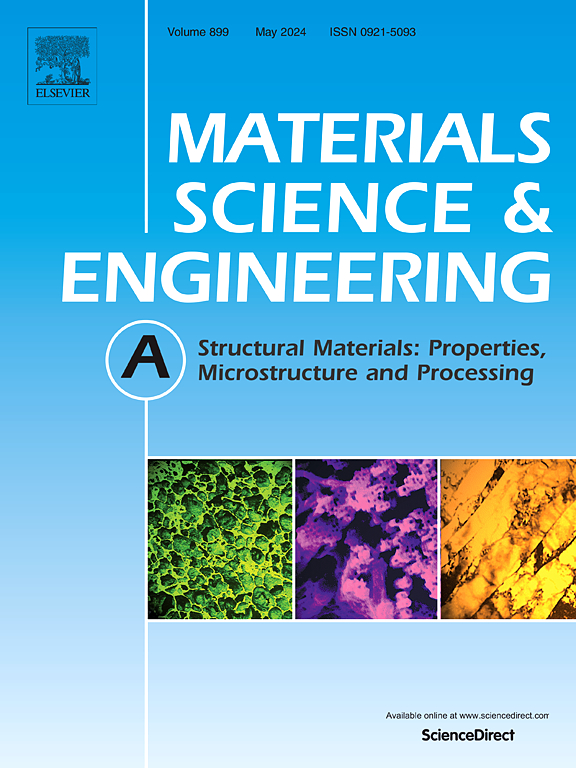Strengthening mechanisms of nanoprecipitates at elevated temperature in secondary hardening steel
IF 7
2区 材料科学
Q1 MATERIALS SCIENCE, MULTIDISCIPLINARY
引用次数: 0
Abstract
This study systematically investigated the effects of tempering temperature on the microstructural evolution, carbide precipitation behavior, and high-temperature mechanical properties of a newly developed 30Cr2Ni3Mo3V secondary hardening steel using SEM, TEM, XRD, and high-temperature tensile testing. The results show that the high-temperature strength initially increased and then decreased with increasing tempering temperature. The tensile strength reached a peak value of 405 MPa at 700 °C for samples tempered at 600 °C. When the tempering temperature was raised to 700 °C, carbides significantly coarsened, and the dislocation density decreased, resulting in a tensile strength drop to 338 MPa. During high-temperature tensile testing, the dispersed precipitation of nanoscale MC carbides (3–5 nm) effectively hindered dislocation motion via the Orowan mechanism, exhibiting superior thermal stability compared to M23C6. This study revealed that the high-temperature strength of 30Cr2Ni3Mo3V steel originates from the strengthening mechanism induced by the dispersion of nanoscale MC carbides during high-temperature deformation.
二次硬化钢中纳米沉淀物的高温强化机制
采用SEM、TEM、XRD和高温拉伸试验,系统研究了回火温度对新研制的30Cr2Ni3Mo3V二次硬化钢组织演变、碳化物析出行为和高温力学性能的影响。结果表明:随着回火温度的升高,合金的高温强度先升高后降低;在600℃回火时,拉伸强度在700℃时达到峰值405 MPa。当回火温度提高到700℃时,碳化物明显粗化,位错密度降低,抗拉强度降至338 MPa。在高温拉伸测试中,纳米级MC碳化物(3-5 nm)的分散沉淀通过Orowan机制有效地阻碍了位错运动,与M23C6相比,表现出更好的热稳定性。研究表明,30Cr2Ni3Mo3V钢的高温强度源于高温变形过程中纳米级MC碳化物的分散引起的强化机制。
本文章由计算机程序翻译,如有差异,请以英文原文为准。
求助全文
约1分钟内获得全文
求助全文
来源期刊

Materials Science and Engineering: A
工程技术-材料科学:综合
CiteScore
11.50
自引率
15.60%
发文量
1811
审稿时长
31 days
期刊介绍:
Materials Science and Engineering A provides an international medium for the publication of theoretical and experimental studies related to the load-bearing capacity of materials as influenced by their basic properties, processing history, microstructure and operating environment. Appropriate submissions to Materials Science and Engineering A should include scientific and/or engineering factors which affect the microstructure - strength relationships of materials and report the changes to mechanical behavior.
 求助内容:
求助内容: 应助结果提醒方式:
应助结果提醒方式:


